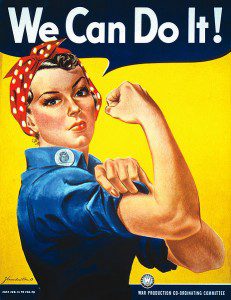Today is International Women’s Day, and it’s as good a time as any to reflect on the role and number of women in the engineering profession.

The holiday itself originated as part of the women’s rights movement at the beginning of the 20th century as a way to raise awareness of issues including women’s rights and their political, social and economic status. Even though the first International Women’s Day was marked in the United States over a century ago, ever since then it has largely been observed internationally, particularly in developing countries as a way to call attention to the many issues facing women around the world.
The day’s meaning and significance has morphed throughout the years and has since become a day to reflect upon these original issues as well as to mark the progress of women worldwide. In the engineering world, this means assessing the current status of women in engineering as well as their progress and future prospects.
Rekha Subramaniam, an electrical engineer in India, writes about her own experiences growing up and going to engineering school in India, including her rude awakening after graduation to the fact that the companies she applied to simply didn’t hire female engineers. While things are notably different today, there is still much room for improvement.
The engineering profession has long been an almost exclusively white male domain. But the world has changed and continues to change, and the engineering workplace as well as the broader workforce reflects that.
And there are quite a few organizations active in advocating for women in engineering, including the Society of Women Engineers (SWE) and the IEEE Women in Engineering professional organization. These organizations promote women in engineering and science as well as working to encourage young women around the world to consider careers in engineering and science. (The Smithsonian Magazine has a nice roundup of articles on prominent women doing wonderful work in the sciences here.)
So while International Women’s Day comes once a year, the focus should really be ongoing and not just one day in March.


i don’t know why the emphasis is on the women engineers. My question is, where are the engineers? I can’t get a response from any engineers, men or women.
My intent was to spotlight women engineers as they have been historically underrepresented in what has been traditionally a white male profession. But the question of the number of engineers in general is also important.